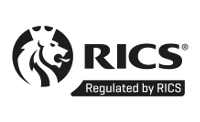We are often instructed by clients who have for years dealt with maintenance on a reactive basis. This means that they have allowed elements to deteriorate allowing defects to occur causing the general decline of the building. Once elements of a building fail this can lead to disruption to its occupation and the operations. This may than result in costly reactive repairs.
A planned maintenance plan is designed to alleviate not only the disruption and ancillary damage caused by defects, but the financial uncertainty of future maintenance costs.
A plan can be prepared to suit the clients specific requirements, the nature of the building and the extent of the clients liability. Our clients include freehold owners, occupiers with leases and property managers who manage multi-occupied buildings. The planned maintenance plans can be tailored to provide the information they need. This may include the entire building or limited areas such the external elements or internal common parts or demised areas.
A planned maintenance plan typically includes the buildings structure and fabric but can also include the mechanical and electrical services. To prepare a planned maintenance plan all the elements the client requires to be included are surveyed. The plan is then prepared in conjunction with a review of any specific requirements the client may have for upgrade works.
The planned maintenance plan is typically set over a 10 year period. The plan will include anticipated repairs and upgrade works within that period along with budget costs for those works identified. The maintenance items and their anticipated costs are set out each year for the duration of the plan. This allows the anticipated costs for the works each year to be calculated so financial provision can be made for them. This can be especially critical in budgeting for those years where high expenditure is anticipated. A planned maintenance plan also allows for works to be considered and programmed. This is to ensure elements are repaired or replaced before they fail causing disruption to the occupiers or allowing other defects to occur.
Clients sometimes question the benefit of instructing and paying for a planned maintenance plan to be prepared. The benefits include lowering maintenance costs by allowing for repairs to be planned and not reactive and enabling financial planning. In addition the plan can assist in improving the longevity of the building and increasing its residual value.
Tim Greenwood and Associates work with a number of clients on all building types to include individual properties to larger portfolios. We advise our clients of the anticipated repair works and costs required to allow for planned works, avoiding unexpected, expensive and disruptive reactive works.
